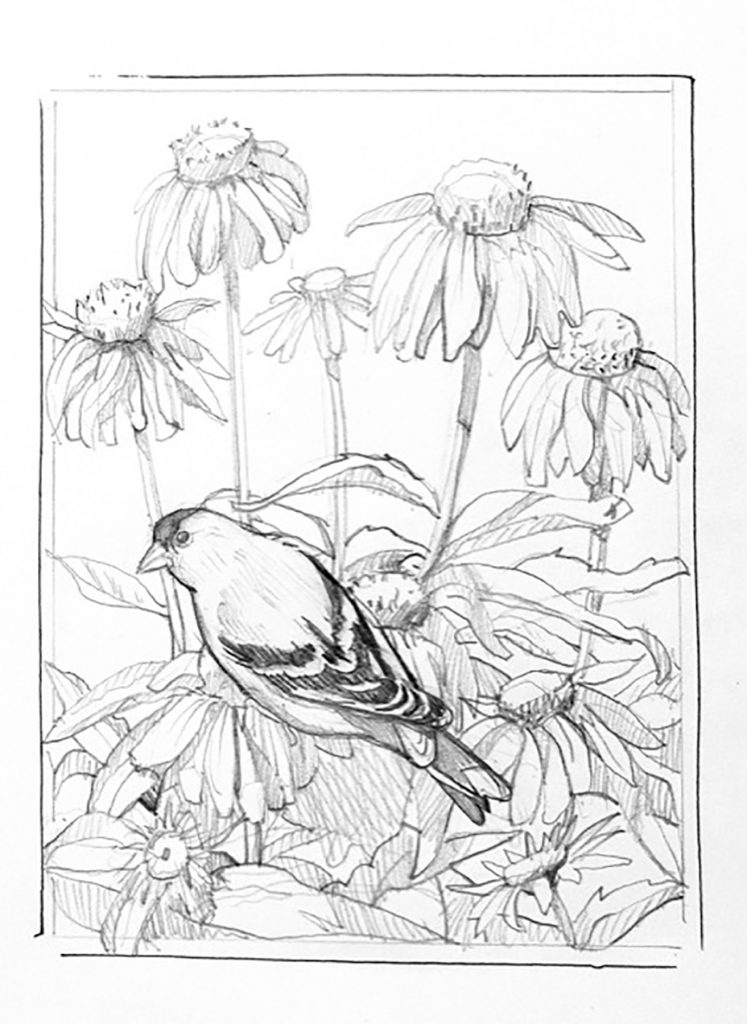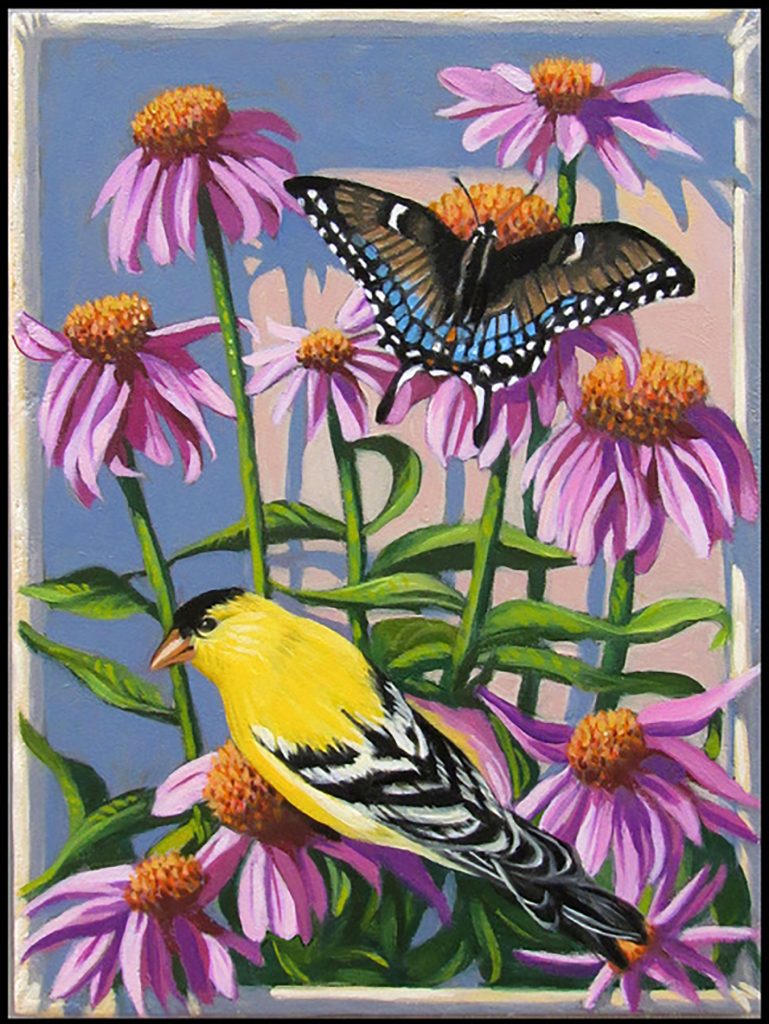For the last five years, Charlottesville artist Tim O’Kane has been designing new seed packets for the flowers, herbs, and vegetables that have been preserved and propagated by the Thomas Jefferson Center for Historic Plants at Monticello. Recently, he spoke with us about the project and his work.
Made in C-VILLE: How did this project get started?
Tim O’Kane: Back in 2017 the Center called me, and we had a great meeting. [Local artist] Gail McIntosh had done a black-and-white engraving that they were using on all the seed packets. The Center wanted to actually show the [individual] plants in color. The whole project is sponsored by Kenneth and Teresa Wood, a couple in Philadelphia. … We started the first year with 20 plants, then we did another 20—I’m starting a new set of 20 now. So far, I’ve done something in the range of 130 paintings. And these are all historic plants documented by Jefferson—when you buy seeds from Monticello, you’re getting what Jefferson grew.


How does this project fit with your own artistic style?
I had never done botanical drawings before, but I am a realist painter … and I’ve been a gardener most of my life. But this is a real education! Peggy Cornett [Curator of Plants at Monticello] and the Center staff are amazing. I can create the drawing, then I show it to them and they correct it. I have the skill in observation—I’ve been painting for 50-plus years now—but I couldn’t do it without them. For example, in one painting in a series on pollinators, I put in bumblebees that don’t exist here. It’s a real team effort.
How did you approach creating a unified look for the packets?
Once I got this job, I started to look at old seed packets—I always liked the way they were done, before photography. I decided to go for a whole new style, a kind of pop art. Each painting has a box around the edge, to give it a three-dimensional aspect. And they all have a pretty bold composition. I really wanted to make them into good paintings, not simply illustrations.
How do you create the paintings of the individual plants?
Mostly I work at Tufton Farm [a Monticello property where the Center’s nursery is housed]. The staff may call me and say such-and-such is in bloom now. I start by photographing the plant I’m working on, so I can get the details. Then I do black-and-white studies to work out the composition and the accuracy. Then I paint in oils. The Center is in the process of having all the works framed—they’re planning to do an exhibition.
What are some of the challenges?
For some of the plants, I had to find out how to make them more dynamic. Herbs, for example—there’s no big flower. I’ve done vegetables, flowers, even fruit—tomatoes are a fruit, and the Center has so many varieties! And I’ve learned about so many new plants—blanket flowers, for example, I didn’t know about them, they’re beautiful and bloom all summer long. And Canterbury bells…
Beyond the seed packets, many of O’Kane’s plant paintings are also featured on pillows, scarves, and other objects sold at the Monticello Shop.
